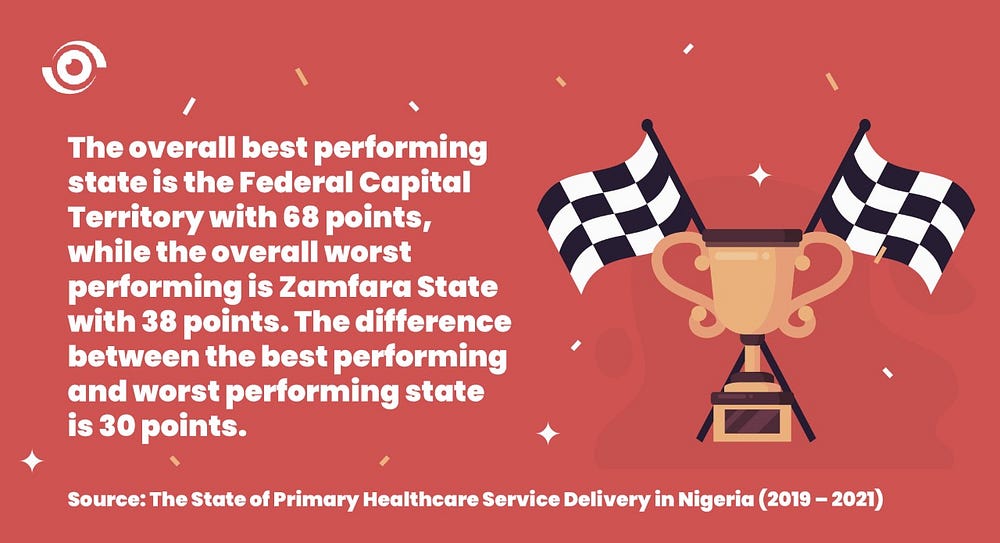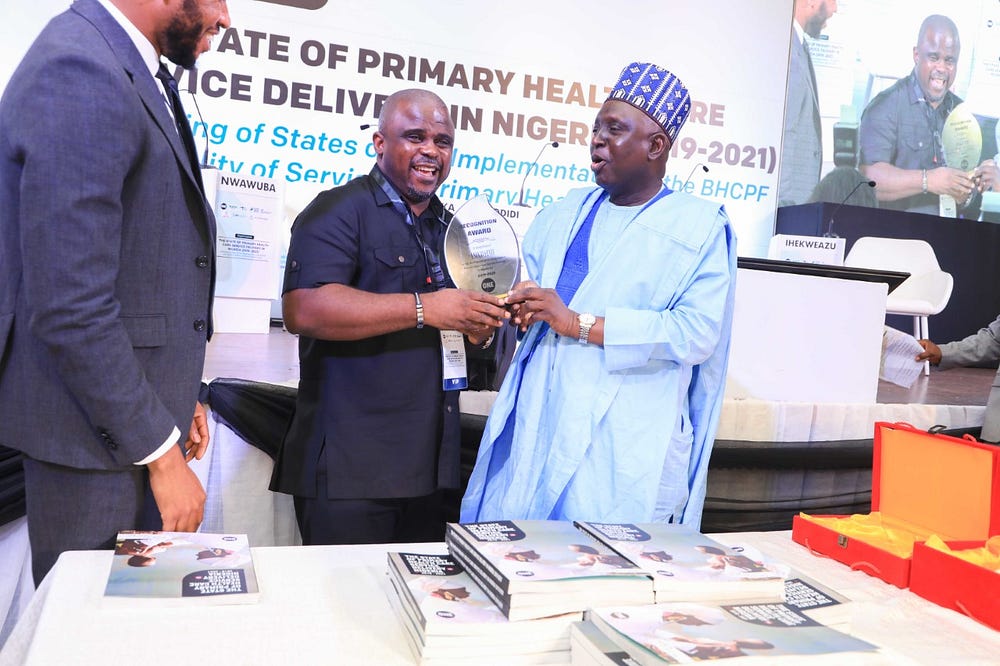It is no secret that the state of primary healthcare in Nigeria is poor. Decades of neglect by state and local governments, whose responsibility it is to provide primary healthcare services in the country, have resulted in inefficient and poor-quality primary healthcare service delivery across the country. Every day, vulnerable people, including pregnant women and children pay the price of this inefficiency. However, the State of Primary healthcare Service Delivery in Nigeria, 2019–2022 report indicates that it is not all doom. While some states are in an extremely dire situation, others have slightly different stories to tell.
Between 2019 and 2021, a consortium that includes ONE Campaign, National Advocates for Health, Nigeria Health Watch, and Public and Private Development Centre, assessed the state of primary healthcare delivery in Nigeria. The aim was to identify the weak links, showcase the strengths and highlight opportunities for improvement in Nigeria’s primary healthcare system. The assessment report, which was launched in July 2022, revealed the good, the bad and the extremely poor in primary healthcare delivery across the country. It also revealed the extent of implementation of the Basic Health Care Provision Fund (BHCPF) in Primary Health Centres (PHCs) across states in Nigeria.
Primary healthcare systems in half of Nigerian states are weak
The assessment was conducted using 20 indicators that cover policy design; legislation and implementation at state level; health workforce and health products; community experiences; implementation of the BHCPF; budgetary allocation and release; and basic healthcare service delivery. It revealed that in the areas of immunisation, nutrition and maternal health, only 19 of the 36 states and the Federal Capital Territory (FCT) achieved a score of 56% and above. The highest performing state, the FCT, achieved a score of 68%.

Progress made in the implementation of the BHCPF, but gaps remain.
The BHCPF was established as a catalytic funding mechanism under section 11 of the National Health Act, which was signed into law in 2014 with the aim of ensuring the provision of quality healthcare services in Nigeria. The first funding releases to the BHCPF pillars commenced in 2018. Findings from this assessment revealed that despite the resources committed to achieve its objectives, there are still huge gaps in the implementation of the BHCPF at the state level.
For instance, each state is required to identify and register at least one PHC per political ward under the BHCPF. However, although all 36 states and the FCT have submitted a full list of PHCs to the BHCPF secretariat claiming that they have the required number of PHCs per ward, only 11 have at least one functional PHC per ward. This therefore means that greater oversight is required to ensure that states provide accurate details of PHCs across the different wards. This highlights that there is a need for greater accountability and transparency in the release and utilisation of the funds.

The fact that 26 states in Nigeria do not have at least one functional PHC per political ward is a huge challenge and the state and local governments of these states must, as a matter of priority, channel resources into building or revitalising PHCs under their control and ensure that each political ward has at least one functional PHC.
Two-thirds of the states have met up to 70% of the registration targets for the poor and vulnerable to access care under the National Health Insurance Authority (NHIA), one of the three gateways of the programme. This is a significant milestone, and the states should be commended. Efforts should be doubled to ensure that all eligible poor and vulnerable Nigerians have access to healthcare services under the BHCPF.

The states that stand out
The difference between the best performing state, the FCT, and worst performing state, Zamfara is 30 points. This points to a huge gap in the strength of healthcare systems and ease of access to quality healthcare services among residents in both states. While states like Enugu, Anambra and the FCT scored high points in immunisation and antenatal coverage as well as health facility delivery, they are not doing so well in the areas of budgeting, health worker density and community members experience.

Poor performing states like Katsina, Sokoto and Zamfara appear to be doing well in meeting family planning needs, however performed quite poorly in crucial areas like health worker density and immunisation coverage. Perhaps the most concerning findings of the assessment is the inaccessibility of healthcare at community level, the poor state of public primary healthcare facilities, low health worker density, and lack of transparency in budgetary allocation and release. Almost all the states did not score well in these areas.

An opportunity to improve on strengths, and address gaps
The assessment has effectively provided an initial view into the state of primary healthcare delivery in Nigeria and is a strong reminder that the responsibility for optimal primary healthcare delivery lies with the state and local government. It is therefore time for state governments to leverage the findings to improve primary healthcare delivery for their people.
The Nigeria Governors’ Forum (NGF) recently launched the Primary Health Care Leadership Challenge Fund where they committed to promote increases in funding and human resource capacity in PHCs. These are some of the areas in which states scored low and the expectation is that the implementation of the Fund will improve overall PHC outcomes. However, implementers must remember that it is not just about making funds available, it is also about how the funds are used. They should ensure that the funds are invested in critical areas of need in primary health care. Private sector initiatives like the Adopt-A-Healthcare-Facility Programme (ADHFP) being led by the Private Sector Health Alliance of Nigeria (PSHAN) is another initiative looking to strengthen the provision of primary healthcare facilities in Nigeria’s 774 Local Government Areas (LGAs).

At the report launch, Senator Ibrahim Oloriegbe, Chairman, Senate Committee on Health, stated that the assessment could not have come at a better time for Nigeria, given that the general elections are taking place in a few months. As political parties prepare for the 2023 elections, civil society organisations and the media should leverage the findings of this assessment to advocate for a strengthened PHC system that delivers quality healthcare and ensure that healthcare delivery, especially primary healthcare, is at the front of every political discourse.
Citizens, who are the real casualties of weak health systems, should join the advocacy and demand for the health sector of their dreams.



This is a realistic information we PHC need to be close supervision to ensure good outcome of the services and finally many of us were VVHW’S please appointment needed thanks
A very beautiful and up-to-date account of the state of Primary Health Care in the various states of Nigeria. The states now know how they stand. It, also, affords them the opportunity of identifying their shortcomings and the areas to prioritize. Achieving universal health coverage (UHC) as well as the other health and health-related goals on the Sustainable Development Goals(SDGs) for all Nigerians is a task that must be done.